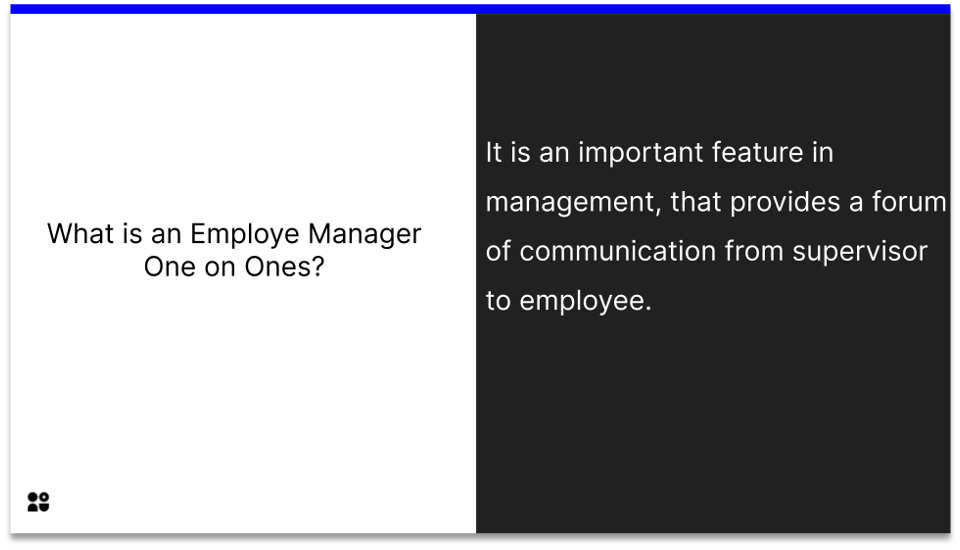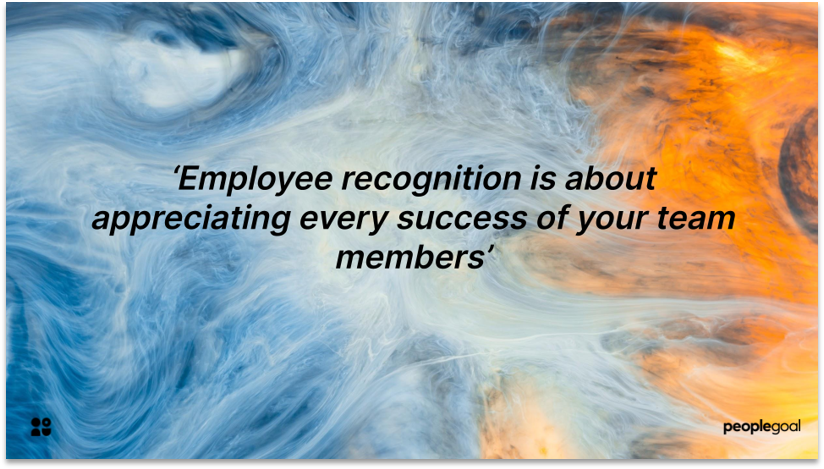‘Change is inevitable. Growth is optional’. But in today’s workforce, employee growth is no longer an optional benefit. According to personneltoday.com, today’s work force values development over and above salary.
In an increasingly competitive labour market, employers need to listen to this call for learning and development if they hope to retain their best employees.
Development puts employees on a new path. Rather than working for a pay cheque, they seek to push themselves and upskill.
HR has a key role to play in encouraging employee growth. They can help employees take the next steps towards their goals, by providing structure and support. For example, personal development plans help employees see what actions are required to realize their goals. Training staff to use SMART goals also enables them to make progress.
Employee development is fast becoming a crucial job function for HR professionals. HR professionals may even kickstart a learning and development program, so that they can fire on all cylinders on employee growth.

Unfortunately, not all development programs were created equal. As employee growth costs time and money, it’s vital to ensure initiatives are relevant to your company’s needs and objectives.
Make use of employee surveys and research groups to find out what inspires and motivates your staff. Be prepared to create a holistic strategy for growth – that takes account of multiple learning styles and skill sets. Take note of any skill gaps or barriers to growth that your plan could address.
While development does not always seem like a priority, there is every reason to start putting employee growth first. For employees, opportunities to grow their skills makes work an exciting place to be. For companies, improved skillsets means better customer service, teamwork, business outcomes, and much more.
Below are 10 ideas that inspire employee growth.
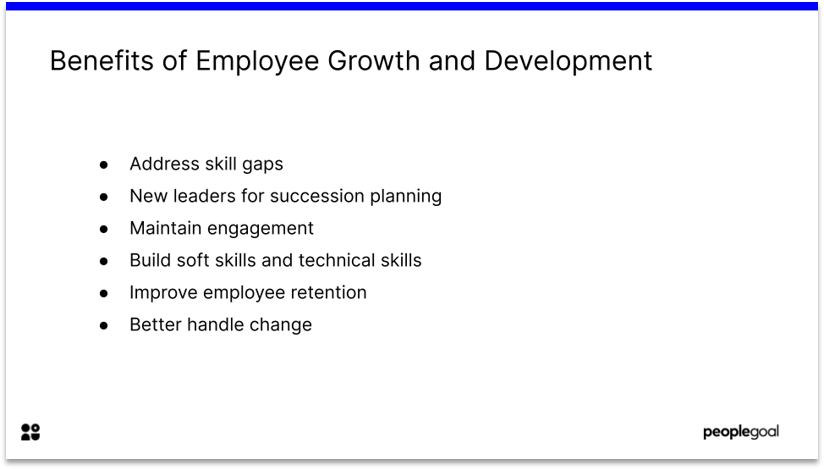
1. Make feedback ongoing
Many companies are approaching feedback the wrong way. According to Gallup, only 26% of employees say feedback improved their work.
Why is feedback so important to development? Each of us has a limited view of our own skills and performance. When we ask others for feedback, they can give us another perspective on how we could improve.
Often, however, feedback blindsides us. When we receive unsolicited feedback, we are often less open to critique. Chris Musser argues that the best kind of feedback is the kind ‘you ask for’– which you actively seek out for some tips on a project.
Too many of us will not seek out criticism – we’d rather hide from it then develop our skills! Creating a culture of ongoing feedback makes feedback less scary. In such cultures, managers and team members give out feedback, positive and constructive, openly. Criticisms are depersonalized, as any pointers are linked to getting the task done, not to someone’s intelligence or personality.
This is the environment that teams should be striving for if they want to create employee growth.
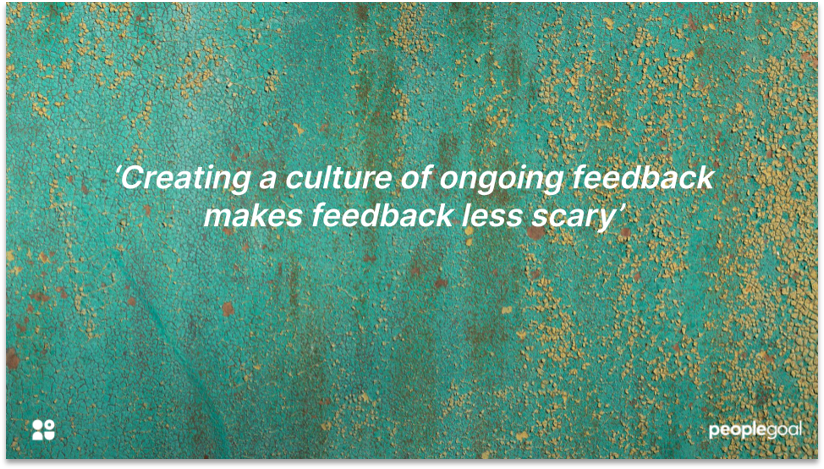
2. Use coaching and mentoring
Supporting every employee’s development needs can be a challenge. But managers who don’t schedule time to discuss development with their teams will find it hard to retain staff.
An external mentoring program can be a great way to ensure that all employees receive support on their professional development. Mentors help people set achievable goals and stick to them. They are role models – creating aspirational team members who will challenge themselves at work.
As always, a formal program is not essential. Managers can be coaches everyday. Find out more about a coaching management style. Know the goals of every team member, and help them create a strategy to reach them.
3. Assign stretch roles and tasks
Sometimes we have to be thrown in at the deep end to move towards our goals! Assign stretch assignments which go beyond an employee’s daily tasks or normal job functions.
For example, ask them to act as a project manager. Employees find challenges like this rewarding. It’s also useful for succession planning to help staff develop those all-important leadership skills.

4. Don’t forget about soft skills
Soft skills are often forgotten about in an L&D program. This is a major oversight. According to SHRM, 89% of new hires who fail within 18 months did so because of a lack of soft skills.
This is an area that needs some major upskilling. Conduct a survey to find out what areas managers and employees think needs improving. Poor communication can really hold a team back – so consider team building exercises that address this in a fun, interactive way.
5. Create professional development plans with staff
Never underestimate the value of a one-on-one. Yes, they take up a lot of time in the schedule, but they can be the most effective way to show employees and managers that they are actively involved in their development.

6. Use cross-training to upskill employees
Sometimes employees find themselves in a rut – they work in their department every day, complete their tasks on time, but they feel like they work in a bubble. They aren’t fully aware of how the company operates.
Cross-departmental training is an excellent way to improve their awareness of what happens in the company more widely. It gives the employee an opportunity to see what working in another department is like – which can support their career development planning.
This can also be beneficial for the company as a whole. Employees from say, the marketing department will offer a different perspective for the customer services team.
7. Consider succession planning
Human resources play a central role in succession planning. Succession planning is the process of identifying future leaders in an organization.
Think about succession planning in relation to an employee growth program. Do your employees have the skills they need to advance in their careers? Is there a need for leadership training to prep employees for future roles?
Stretch roles, mentoring and leadership training all help to upskill staff – so that they can become the leaders your company needs!
8. Create a company university
Apple University. Hamburger University. Disney University. These are all examples of corporate universities. If you are looking to overhaul your learning and development strategy, starting a ‘university’ might not be as crazy as it sounds.
Be warned – a company university takes plenty of work. You’ll have to create a syllabus and learning program (together with logistical difficulties if you’re providing learning on site!).
However, the benefits are manifold. You can create job specific courses which motivate employees to build their skills in a structured way. Courses are usually aligned with business objectives – a great way to drive development towards company targets.

9. Use online micro-courses
The move to remote work has shown that learning can happen online in an engaging, interactive way.
There are free, ready-made micro-courses on a multitude of soft and technical skills. If you want to motivate employees to complete courses, you could create a recognition program where employees are rewarded with a voucher for successful completion!
10. Include fun and sociable learning activities
Classrooms and textbooks aren’t for everyone. Making learning part of your culture. You could start a book club on an industry topic. Not only does this make research fun, you’re also helping employees to connect and socialize.
‘Lunch and learns’ offer bitesize learning in an informal setting. You could invite external speakers for a Q&A. Or, invite an employee to give a short presentation about something they’re passionate about in your field.
All types of learning are potentially valuable. Starting a crafting session for team members might not seem relevant to employee growth. But events like this build community and encourage employees to support each other. According to Gallup, having a best friend at work can greatly improve engagement– so why not make time for fun at work.
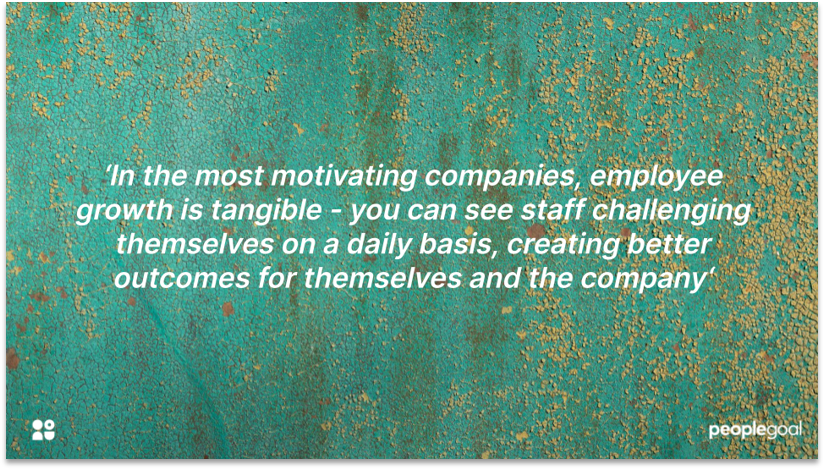
Making employee growth a priority
In the most motivating and engaging companies, employee growth is tangible – you can see staff challenging themselves on a daily basis, creating better outcomes for themselves and the company.
Employee growth requires truly understanding the needs of your company and its people. Use a variety of the techniques above and find out what works best for your organization.
To learn more about employee growth, why not read our blog post on the value of 360 Reviews for employee growth. Or to find out how PeopleGoal can help you with development, book a demo today.
Ready to 3x Your Teams' Performance?
Use the best performance management software to align goals, track progress, and boost employee engagement.


